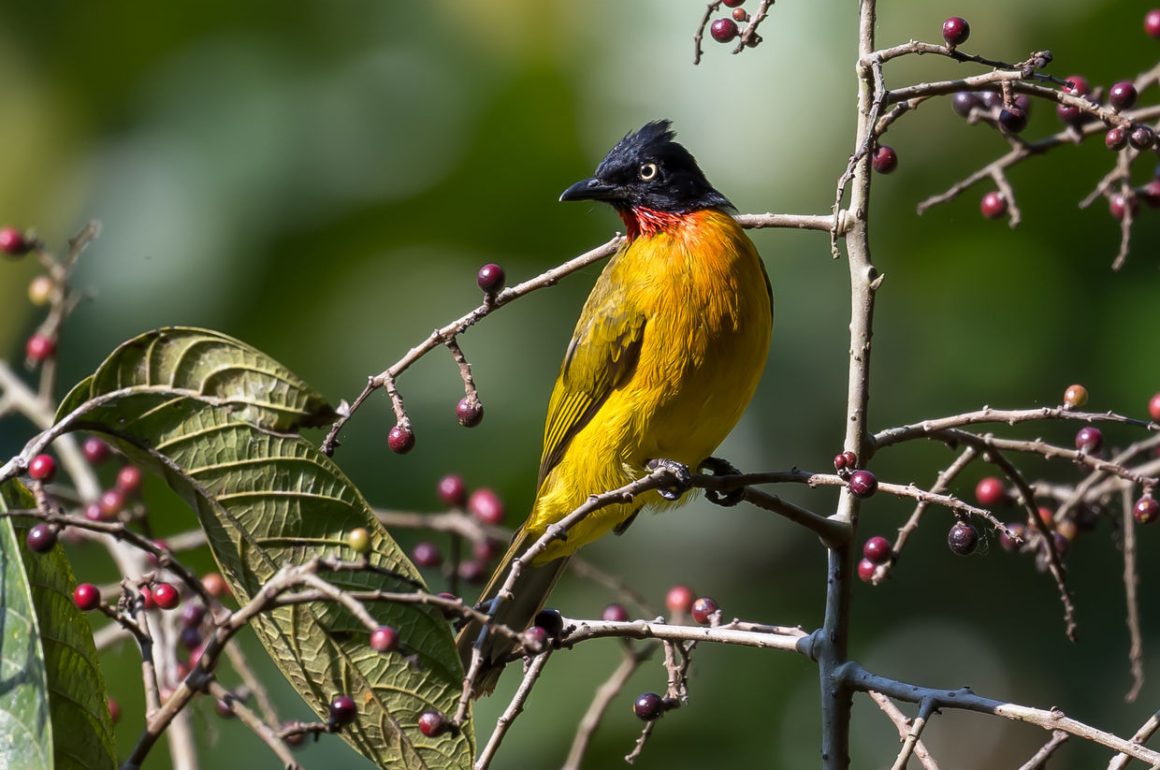
Coban Baung is a location near Mount Kawi, a dormant volcano in East Java. It is not too far away from Kepanjen, where I stayed the night before going there.
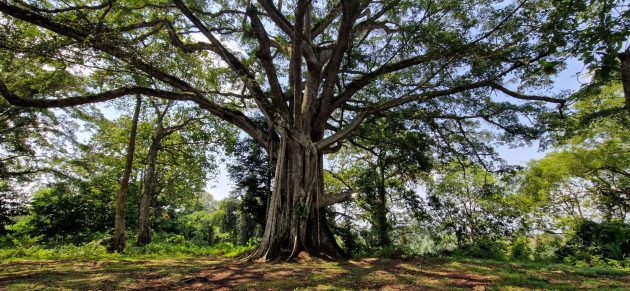
One of the most interesting birds there is the Ruby-throated Bulbul.
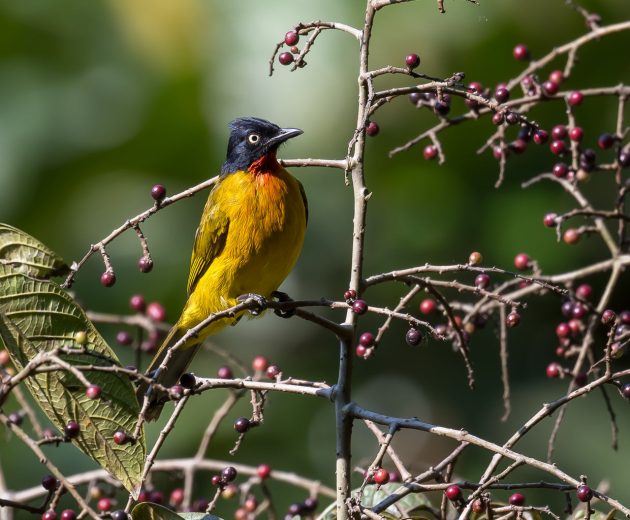
Sadly, like so many other bird species in Java, it is threatened by trapping and thus categorized as Vulnerable.
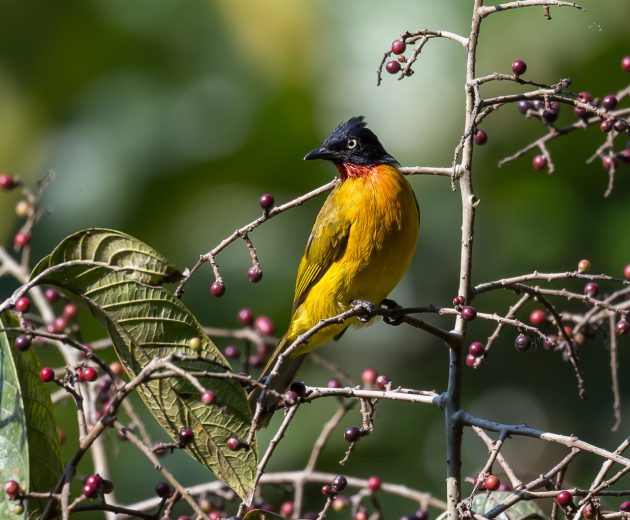
It is almost as typical that Cornell still has not updated the profile page of the Ruby-throated Bulbul accordingly, stating that the species is “Not globally threatened. Fairly common to common; rare in Bali. In most of range still reasonably common in drier forests of lowlands, despite heavy degradation; common even in eastern and southern Java”.
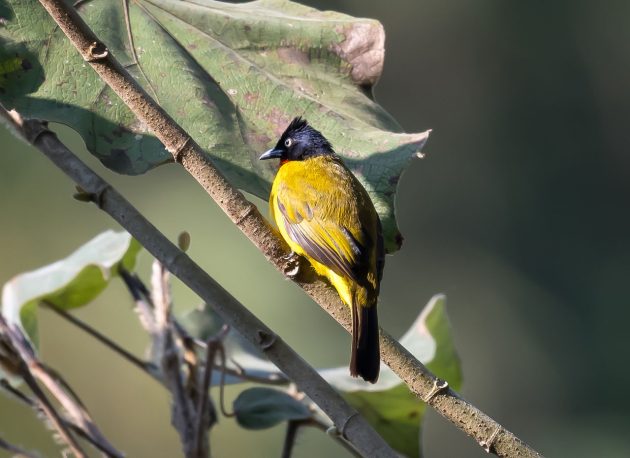
The scientific name Rubigula dispar presumably indicates that the bulbul is different (“dispar”) from many other bulbuls.
In a study conducted in Java, Ashy Drongos were found to play the role as leaders of mixed flocks, leading and protecting the mixed flock.
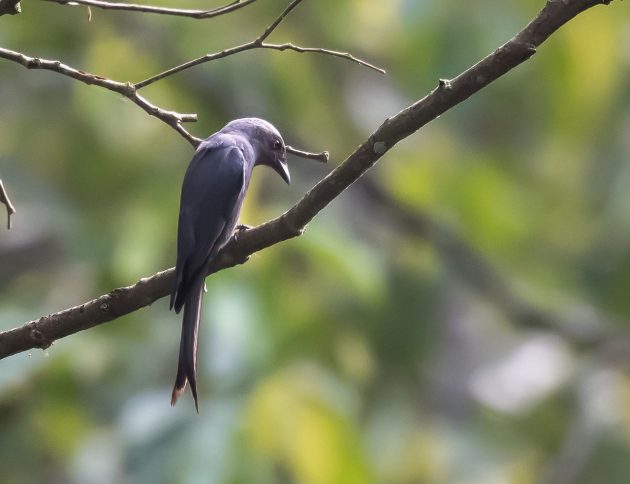
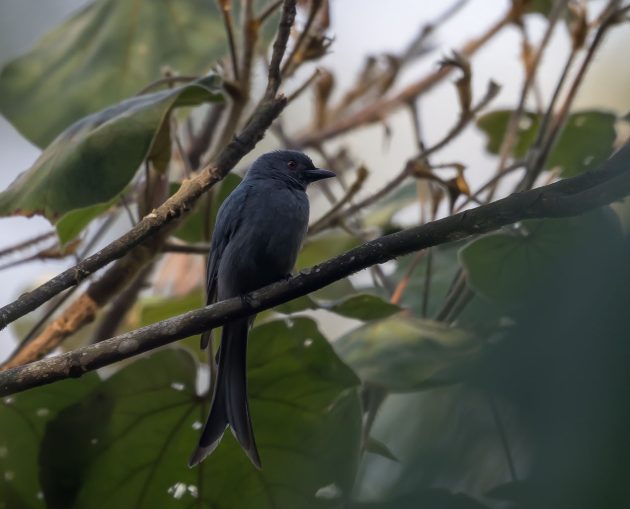
I am not sure they can apply for maternity/paternity leave in this role when nesting.
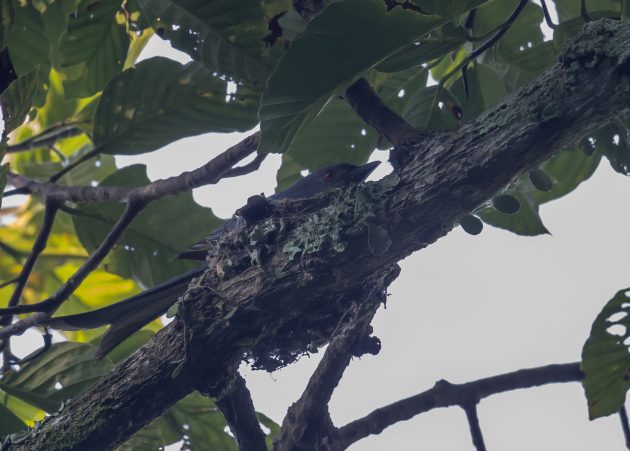
The Black-naped Fruit Dove lives on Java and also in the Basel Zoo (Switzerland).
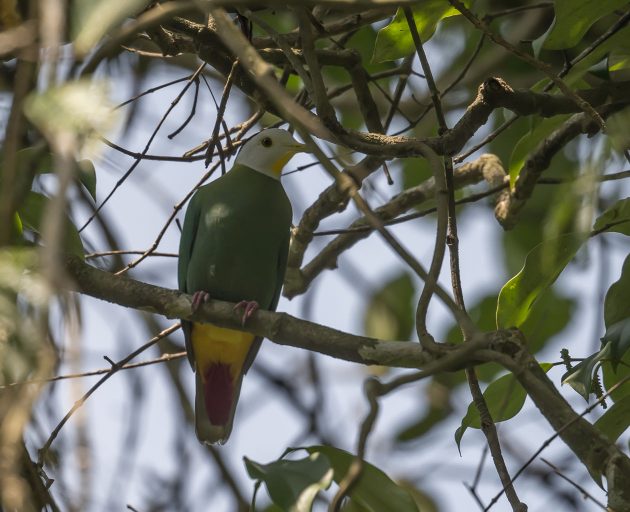
Though of course, there it is called the Schwarzkappen-Fruchttaube. Somehow, this name makes me feel the bird belongs to some right-wing Nazi party. Probably not though.
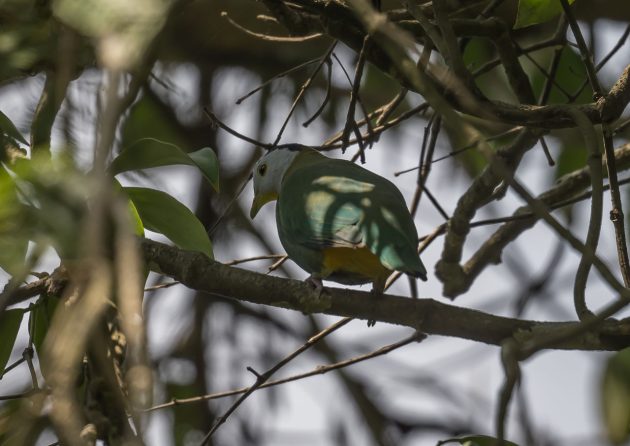
If you are more interested in education than in birds, and also speak Indonesian, you might want to get hold of a paper titled “Abundance of Bird Species in Tadulako University Campus Area and its Utilization as a Learning Media”. Of course, the species on the campus include our hero, the Black-naped Fruit Dove.
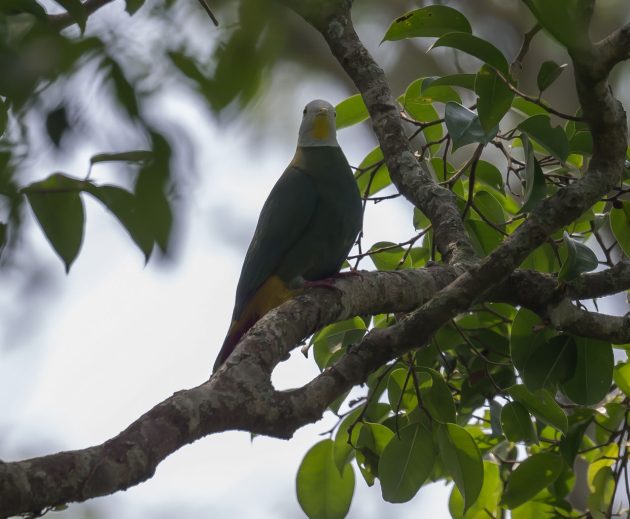
The “Systematics History” section of the Cornell profile has the statement “A distinctive form of uncertain affinities”, which sounds rather confusing to me, or should I say it makes me feel distinctively uncertain?
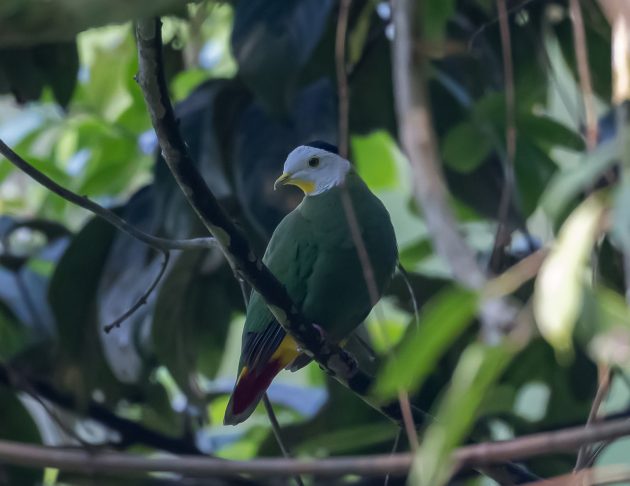
As in humans, the female looks different from the male.
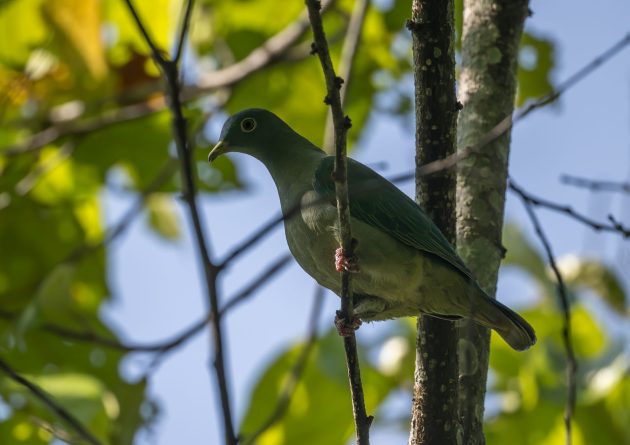
For me, the two species of flowerpeckers were a major attraction of Coban Baung. First, the Crimson-breasted Flowerpecker.
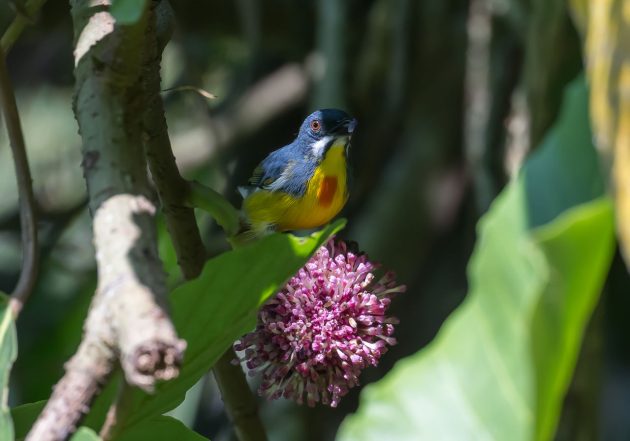
Cornell describes the 56 species of flowerpeckers as “frenetic fruit-cruisers of tropical Asian forest canopies”.
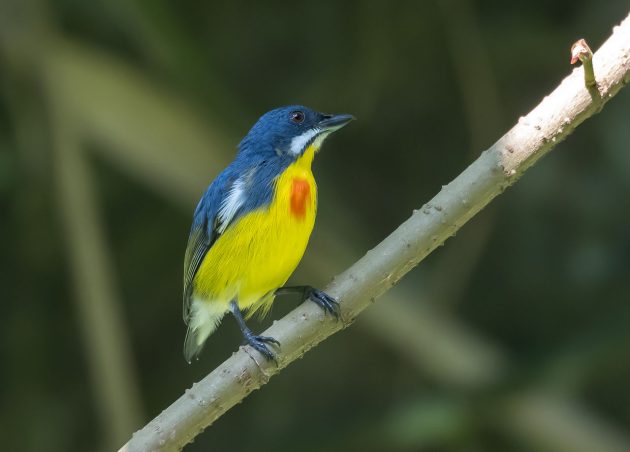
Cornell also comments on the name of the family: “As far as we know, they never actually peck flowers, instead eating a diet of fruit (especially mistletoe) and nectar, which they also feed to their young.”
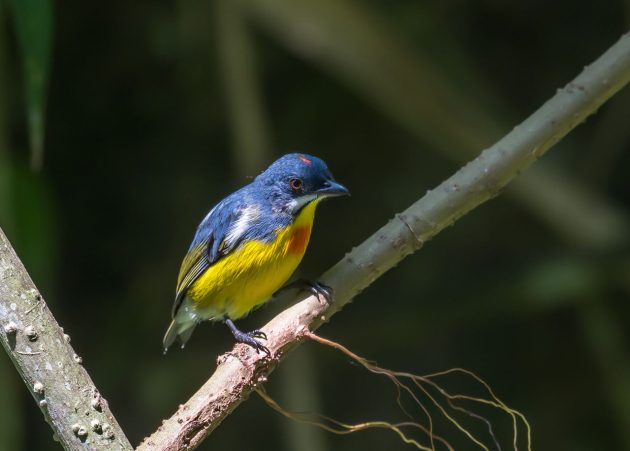
Presumably, the percussus (“blood-stained”) in the scientific name Prionochilus percussus refers to the red on the breast and also on the crown.
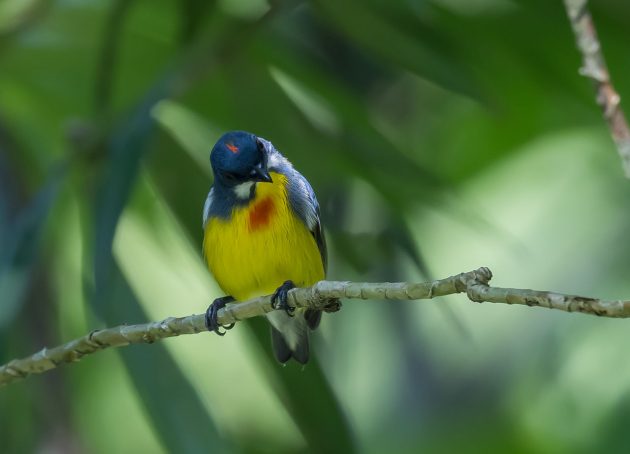
If you are interested in the food of this species, check out this post (spoiler alert: it is mostly fruit, with a few spiders mixed in for protein).
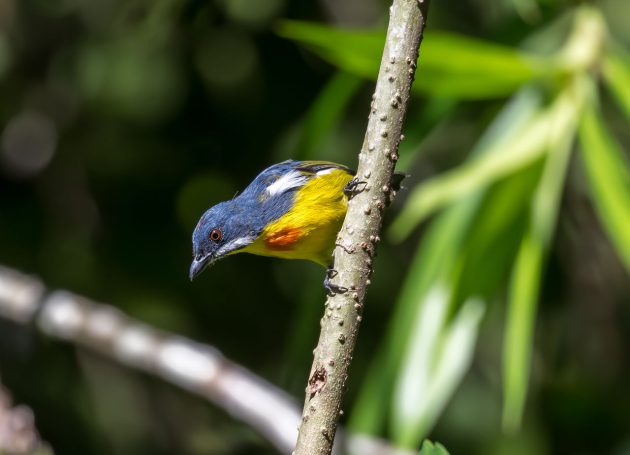
Despite information such as this one, the Wikipedia entry on the genus Prionochilus ends with the typical statement that is routinely added to every research paper in the world in a slightly modified form: “Information about the diet (and many other aspects of the biology of this genus and indeed family) is patchy and more research is needed.”
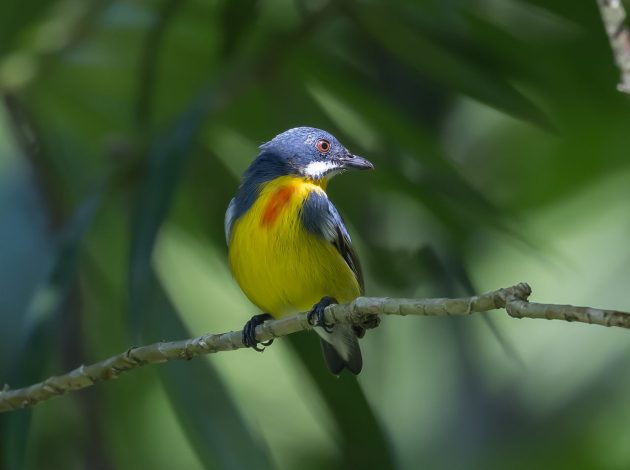
Presumably, most flowerpecker experts would agree that the same applies to the Orange-bellied Flowerpecker, though it is in another genus (Dicaeum, which is by far the largest genus of flowerpeckers).
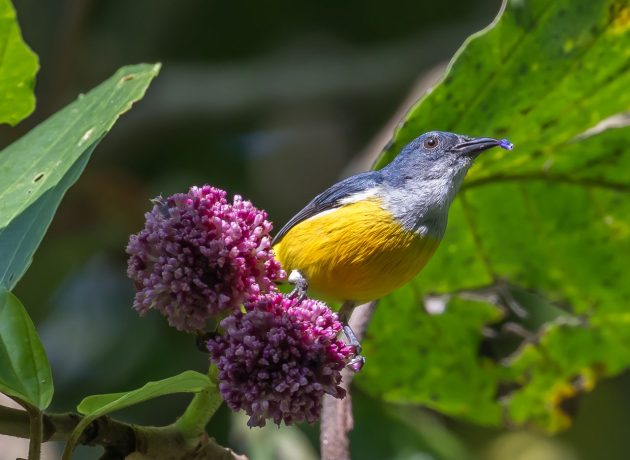
The full scientific name Dicaeum trigonostigma sounds vaguely Christian to me, but it really just means that the bird has a triangular mark on its back. It is orange, and my photos fail miserably to show it, except for this one.
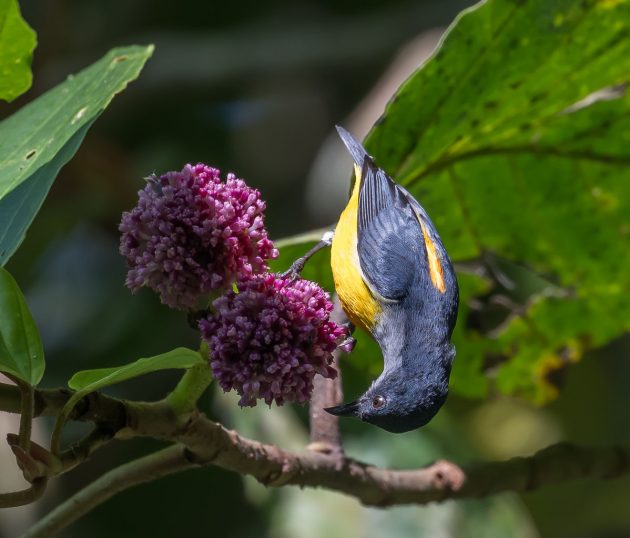
As with many flowerpeckers, the female is much less attractive than the male, but experts generally confirm that the females without exception have a beautiful soul.
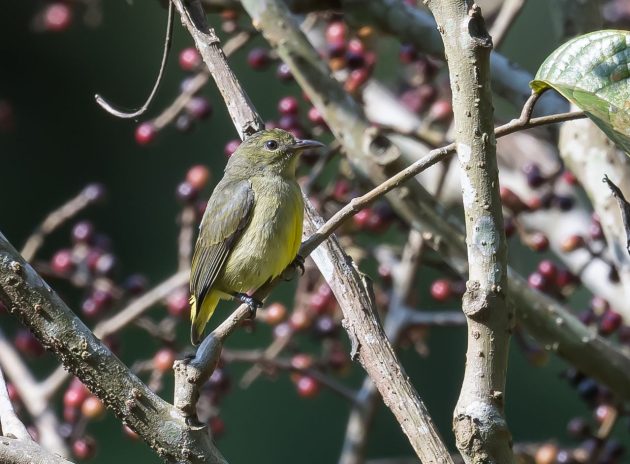
According to Cornell, Orange-bellied Flowerpeckers take nectar from, and pollinate, a species of durian tree in Borneo – so, it is quite possible they are not allowed to enter hotel rooms in Singapore.
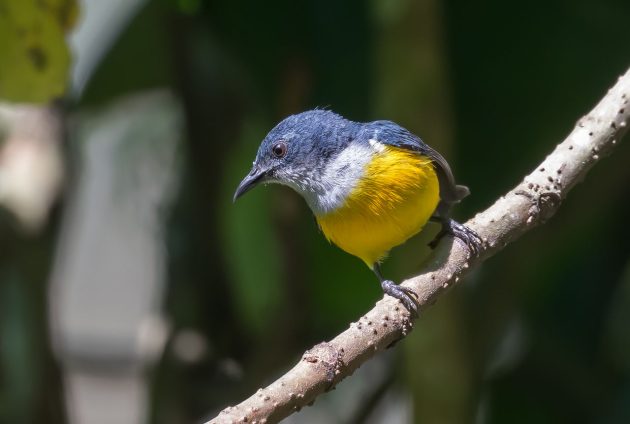
The Javan Sunbird is a Javan endemic that has been split from Temminck’s Sunbird. To me, it looks very similar, and I could not find any note on visible differences between the two species.
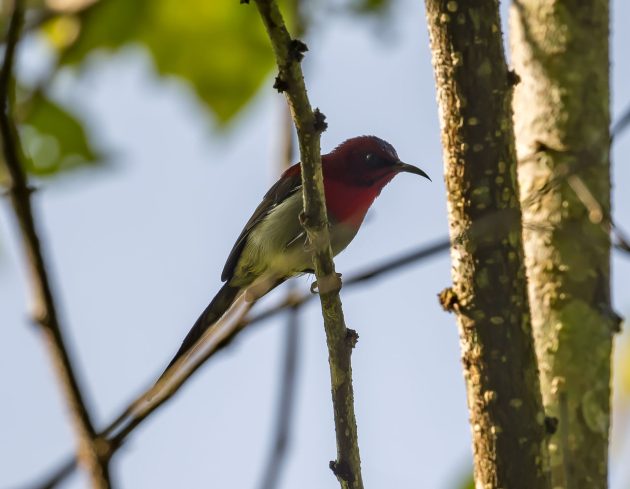
The mystacalis of the scientific name Aethopyga mystacalis means “moustached”, but so is Temminck’s Sunbird (Aethopyga temminckii).
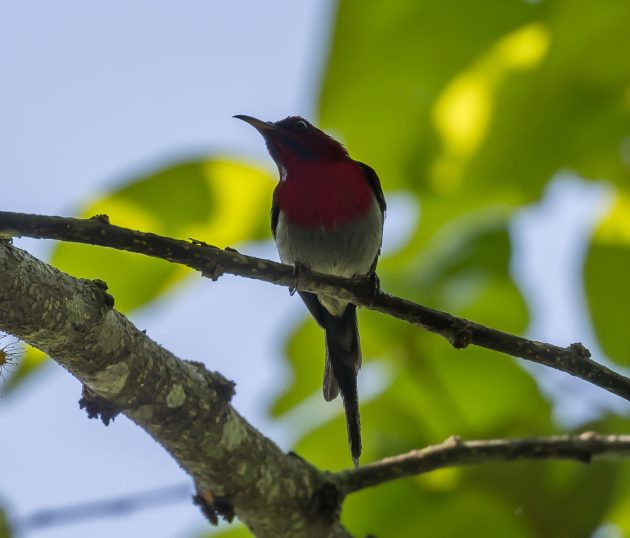
Similarly, the Sangkar White-eye is also the result of a split. Says Cornell: “A recent split from the formerly large wastebasket taxon Oriental White-eye, this small white-eye is now considered endemic to Java and Bali”.
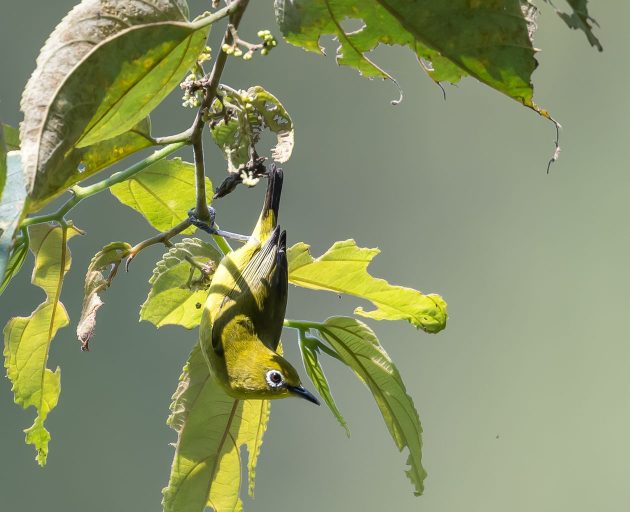
The scientific name Zosterops melanurus indicates that the bird has a black tail, which indeed seems to be a distinctive feature. Then again, with 111 species in the genus Zosterops alone, it probably is not.
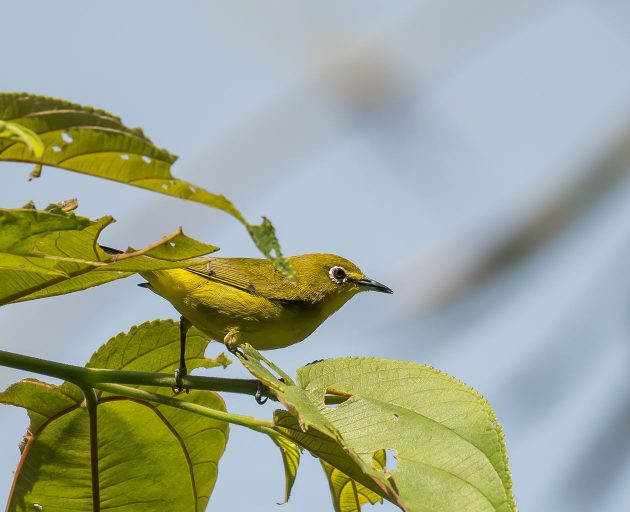
Finally, the Scarlet Minivet is not the result of a split yet – but the Cornell entry sounds ominous:
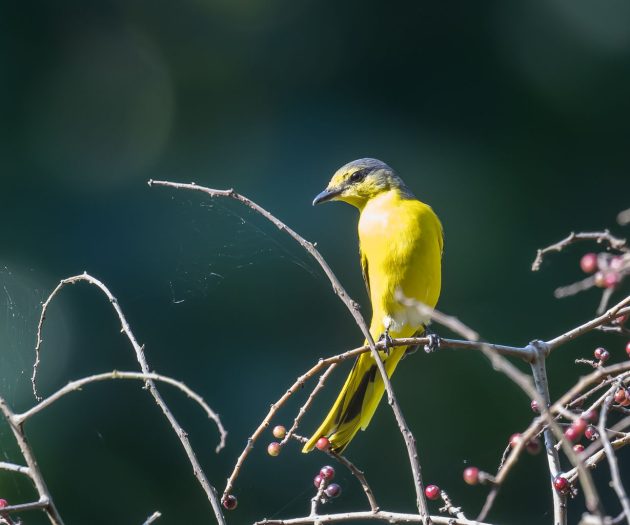
“Morphological and plumage analyses suggest races may represent four or five species, but precise boundaries unclear.”
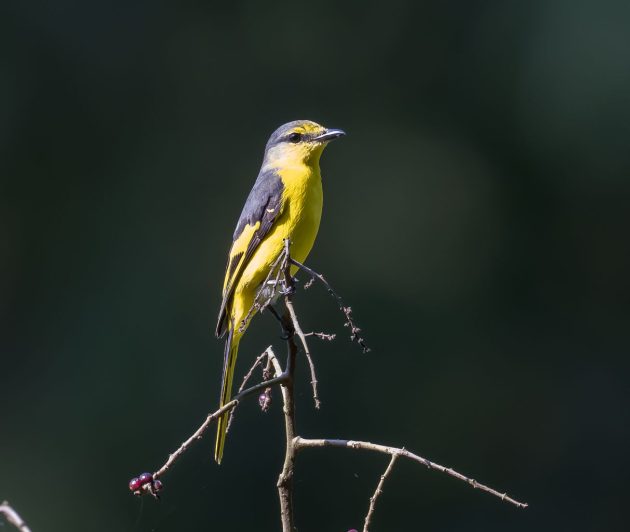


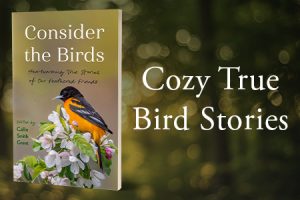

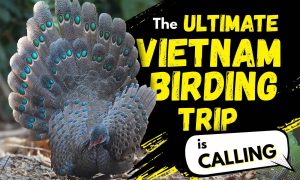




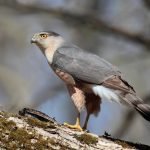

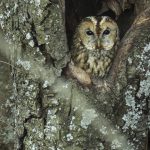
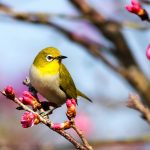
I would need therapy if I discovered that I belongedd in a “wastebasket taxon”.